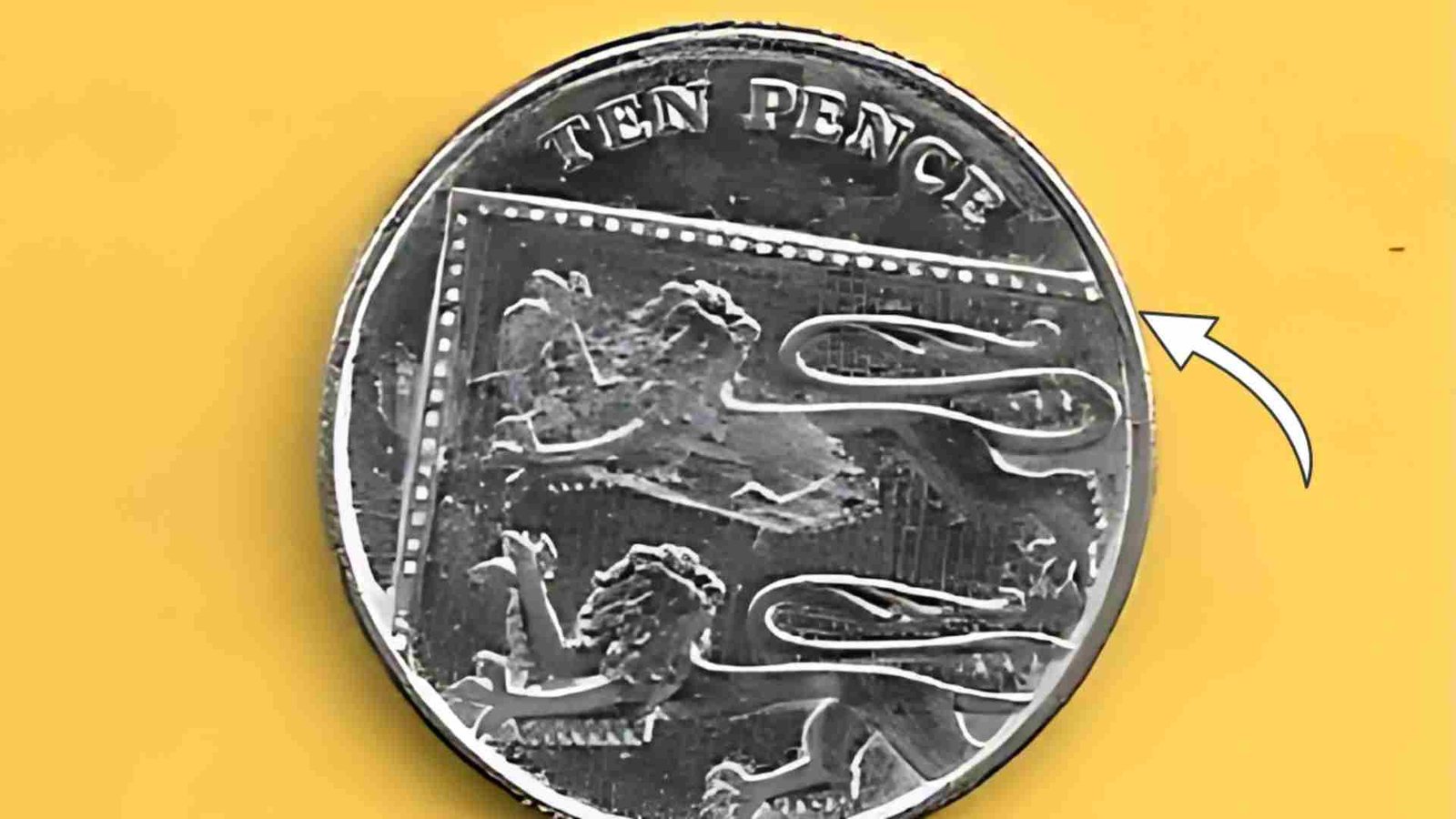Ever tossed a penny into a jar or left it in a tip tray without a second thought? What if one of those pennies was worth millions? The idea that a single cent could be valued at $79 million sounds like a fairy tale, but in the world of coin collecting, it’s a tantalizing reality. Certain rare Lincoln pennies, due to minting errors, low production, or historical significance, have fetched jaw-dropping prices at auctions.
Some of these treasures might still be hiding in circulation—maybe even in your pocket change. Let’s explore the top 10 most valuable penny coins, learn how to spot them, and uncover why they’re worth a fortune. Ready to start checking your change? Let’s dive in!
The Fascinating World of Valuable Pennies
Pennies, officially called cents, have been a staple of American currency since 1793. The Lincoln penny, introduced in 1909 to honor Abraham Lincoln’s 100th birthday, is especially iconic. Designed by Victor David Brenner, it was the first U.S. coin to feature a real person’s portrait.
While most pennies are worth just one cent, rare varieties with unique errors or low mintages can be worth millions. The claim of “$79 million each” often refers to the combined value of the rarest pennies, with individual coins fetching hundreds of thousands to millions at auction.
Why Are Some Pennies So Valuable?
The value of these pennies comes from a mix of rarity, minting errors, and collector demand. Errors like striking a coin on the wrong metal (e.g., copper instead of steel) or doubled designs make a penny unique. Low mintage years, where fewer coins were produced, also boost value.
Add in historical significance and pristine condition, and you’ve got a coin that collectors will pay a fortune for. The thrill of possibly finding one in circulation keeps collectors and casual hunters alike on the lookout.
The Top 10 Most Valuable Penny Coins
Here’s a rundown of 10 pennies that could make you rich, with details on why they’re so prized. These coins, primarily Lincoln Wheat Pennies (1909-1958) and some later varieties, are the ones collectors dream about.
| Coin | Year | Key Feature | Estimated Value (Circulated) | Estimated Value (Uncirculated) | Why It’s Valuable |
|---|---|---|---|---|---|
| 1943 Bronze Lincoln Cent | 1943 | Copper instead of steel | $100,000 – $250,000 | $840,000 – $2.3M | Rare error; only ~20 exist |
| 1944 Steel Lincoln Cent | 1944 | Steel instead of copper | $75,000 – $200,000 | $373,750 – $1.1M | Rare error; ~30 known |
| 1909-S VDB Lincoln Cent | 1909 | Designer’s initials “VDB” on reverse | $1,200 – $5,000 | $10,000 – $100,000 | Low mintage (484,000) |
| 1955 Doubled Die Lincoln | 1955 | Doubled text on obverse | $500 – $2,000 | $2,000 – $75,000 | Visible doubling error |
| 1969-S Doubled Die | 1969 | Prominent doubling on obverse | $25,000 – $75,000 | $100,000 – $126,500 | Extremely rare; ~40 known |
| 1922 No D Lincoln Cent | 1922 | Missing “D” mint mark | $500 – $2,000 | $20,000 – $50,000 | Die error; ~10,000 exist |
| 1914-D Lincoln Cent | 1914 | Low mintage from Denver | $200 – $1,000 | $3,000 – $152,750 | Only 1.2M minted |
| 1877 Indian Head Penny | 1877 | Low mintage, Indian Head design | $500 – $2,000 | $15,000 – $149,500 | Only 852,500 minted |
| 1909-S Indian Head Penny | 1909 | Last year of Indian Head design | $300 – $1,000 | $1,000 – $10,000 | Low mintage (309,000) |
| 1992 Close AM Lincoln | 1992 | “A” and “M” in “AMERICA” touch | $2,000 – $5,000 | $5,000 – $20,000 | Proof die error |
Stories of Life-Changing Finds
The possibility of finding one of these pennies keeps the dream alive. Take Don Lutes, a teenager who found a 1943 Bronze Cent in his lunch change in 1947. Decades later, after his death in 2019, it sold for $204,000.
Another collector discovered a 1969-S Doubled Die in a bank roll in January 2025, fetching $42,000. My friend Mike, a hobbyist, once found a 1914-D penny in his grandpa’s old coin jar—not a million-dollar find, but it sold for $800. These stories show that valuable pennies can turn up in unexpected places.
Why These Pennies Might Still Be in Circulation
Despite their value, some of these coins are still out there. Why? Many were released into circulation decades ago and passed unnoticed through wallets, cash registers, and piggy banks. When collectors pass away, their coins sometimes re-enter circulation through heirs unaware of their value. Bank rolls from old stashes can also bring rare coins back into the system.
The U.S. Mint’s 2024 report noted that 3.17 billion pennies were produced last year, costing 3.69 cents each, which may push values higher as production halts.
The Impact of Trump’s Penny Production Halt
In 2025, President Trump announced a halt to penny production, citing costs exceeding their value. This could make rare pennies like the 1943 Bronze or 1955 Doubled Die even more valuable, as collectors scramble for existing coins.
Stephanie Sabin, President of PCGS, told Newsweek, “Whenever a coin is discontinued, we see a resurgence of interest,” predicting a boom in demand. This makes now the perfect time to check your change.
How to Spot These Valuable Pennies
Want to join the treasure hunt? Here’s how to identify these rare pennies:
- Check the Date: Focus on key years: 1909, 1914, 1922, 1943, 1944, 1955, 1969, 1992.
- Test with a Magnet: A 1943 copper penny won’t stick; a 1944 steel penny will.
- Look for Errors: Use a 5x-10x magnifying glass to spot doubled text (e.g., 1955 or 1969-S) or missing mint marks (e.g., 1922 No D).
- Check Weight: Copper pennies (pre-1982) weigh 3.11 grams; zinc ones (post-1982) weigh 2.5 grams.
- Examine Condition: Uncirculated coins with original red color are worth more. Never clean coins, as it reduces value.
If you find a promising penny, store it in a plastic holder and get it appraised by PCGS or NGC.
Where to Look for These Coins
You don’t need to be a pro to find these pennies. Try these spots:
- Pocket Change: Check every penny you get.
- Bank Rolls: Ask for penny rolls at your bank; older rolls may contain Wheat Pennies.
- Coin Jars: Dig through family collections or old piggy banks.
- Flea Markets or Garage Sales: Sellers may not know the value of their coins.
- Coin Shops: Buy uncirculated or error coins from dealers.
Avoiding Fakes and Scams
High-value coins attract counterfeiters. Some alter dates (e.g., turning a 1948 into a 1943) or plate steel pennies with copper. To avoid fakes:
- Magnet Test: Copper pennies don’t stick; steel ones do.
- Weight Check: Compare to known weights (3.11g for copper, 2.7g for steel).
- Professional Grading: Only trust PCGS or NGC for authentication.
- Avoid Shady Sellers: Use reputable auction houses like Heritage Auctions or trusted dealers.
Conclusion: Your Next Penny Could Be a Million-Dollar Find
The idea that a penny worth millions could be in your change is thrilling. From the 1943 Bronze Cent to the 1992 Close AM, these 10 pennies are more than coins—they’re pieces of history that could change your life. With President Trump’s 2025 penny production halt, the value of these rarities may soar.
So, grab a magnifying glass, check those dates, and test with a magnet. Whether you’re a collector or just curious, the next penny you pick up could be a ticket to millions. Happy hunting!
FAQs About These $79 Million Pennies
Why are these pennies worth so much?
Their value comes from minting errors (e.g., 1943 copper, 1944 steel), low mintage (e.g., 1909-S VDB), or unique designs (e.g., 1955 Doubled Die), plus high collector demand.
How can I tell if I have a rare penny?
Check the date (1909, 1914, 1922, 1943, 1944, 1955, 1969, 1992), use a magnet (copper doesn’t stick for 1943; steel does for 1944), and look for doubled text or missing mint marks. Get it graded by PCGS or NGC.
Are all 1943 pennies valuable?
No, most 1943 pennies are steel and worth a few cents. Only the copper 1943 pennies are rare, valued at $100,000-$2.3M.
Where can I find these rare pennies?
Look in pocket change, bank rolls, coin jars, flea markets, or coin shops. Older collections are prime spots.
What should I do if I find a valuable penny?
Don’t clean it. Store it in a plastic holder and get it authenticated by PCGS or NGC. Sell through reputable auction houses or dealers.




